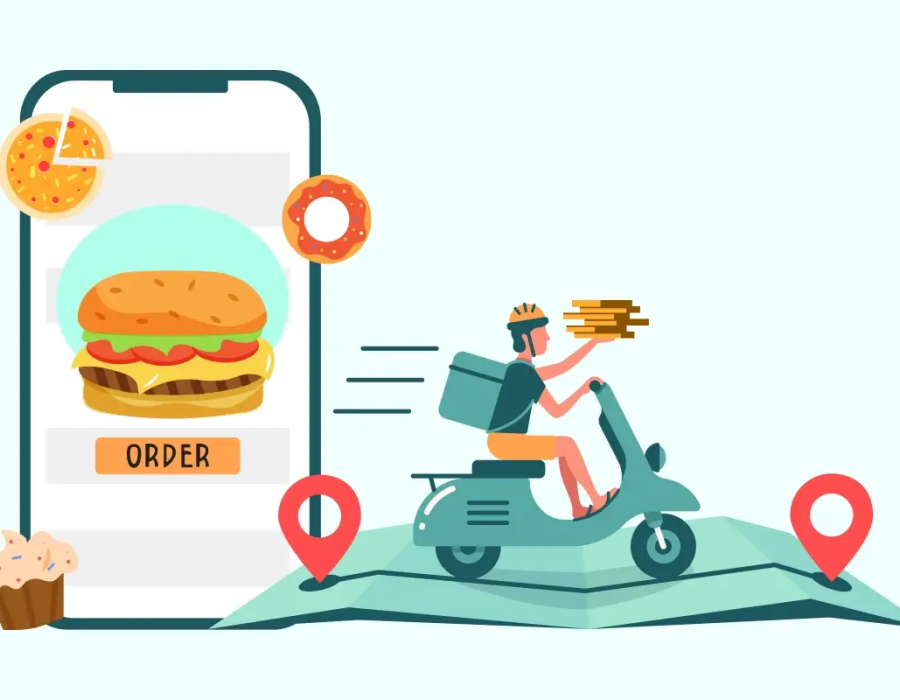Developing a food delivery app in Saudi Arabia can be a rewarding venture, given the growing demand for convenient dining options. Here’s a comprehensive guide to help you through the process:
1. Research and Planning
a. Market Analysis:
- Understand Local Preferences: Investigate popular cuisines, dining habits, and delivery preferences in Saudi Arabia.
- Analyze Competitors: Examine existing food delivery apps in the region to identify their strengths, weaknesses, and market gaps.
b. Define Your Goals:
- Identify Target Audience: Decide whether you’ll focus on specific demographics or offer a broad range of options.
- Set Objectives: Determine key features, such as real-time tracking, payment options, and restaurant partnerships.
2. Legal and Regulatory Compliance
a. Business Registration:
- Register Your Business: Ensure compliance with Saudi Arabian business regulations and obtain necessary licenses.
b. Data Protection:
- Understand Local Regulations: Familiarize yourself with data protection laws like the Saudi Arabian Personal Data Protection Law (PDPL).
3. Design and Features
a. User Interface (UI) Design:
- Create an Intuitive Layout: Design a user-friendly interface with easy navigation for both customers and delivery personnel.
- Cultural Considerations: Incorporate elements that resonate with Saudi culture, such as local language support and relevant visuals.
b. Key Features:
- Restaurant Listings: Include detailed menus, pricing, and reviews.
- Order Tracking: Provide real-time tracking for orders.
- Payment Integration: Offer various payment methods, including credit/debit cards and local payment options like STC Pay.
- Customer Support: Implement in-app chat or call features for customer assistance.
4. Technology and Development
a. Choose the Technology Stack:
- Backend Development: Select a robust backend framework to manage data and server operations.
- Frontend Development: Develop a responsive and engaging app interface for both iOS and Android platforms.
b. Development Process:
- Hire Developers: Assemble a skilled team or partner with a development agency experienced in food delivery apps.
- Prototype and Testing: Create a prototype, conduct user testing, and iterate based on feedback.
5. Partnerships and Integrations
a. Collaborate with Restaurants:
- Establish Partnerships: Build relationships with local restaurants and negotiate terms for inclusion in your app.
- Onboard Restaurants: Help restaurants set up their profiles and manage their listings.
b. Delivery Logistics:
- Integrate with Delivery Services: If you’re not handling delivery in-house, partner with local courier services or logistics companies.
6. Marketing and Launch
a. Develop a Marketing Strategy:
- Digital Marketing: Utilize social media, search engine optimization (SEO), and paid advertising to promote your app.
- Local Outreach: Engage with local communities through events, promotions, and collaborations.
b. Launch Your App:
- Soft Launch: Start with a soft launch to gather initial user feedback and make necessary adjustments.
- Official Launch: Roll out your app officially with a marketing campaign to maximize visibility.
7. Post-Launch and Maintenance
a. Monitor Performance:
- Track Analytics: Use analytics tools to monitor user behavior, app performance, and transaction data.
b. Continuous Improvement:
- Update Features: Regularly update the app to fix bugs, improve functionality, and introduce new features based on user feedback.
- Customer Feedback: Continuously gather and address customer feedback to enhance the user experience.
By following these steps, you can successfully develop and launch a food delivery app in Saudi Arabia, tapping into the growing demand for convenient dining solutions and making a significant impact in the local market.





Comments